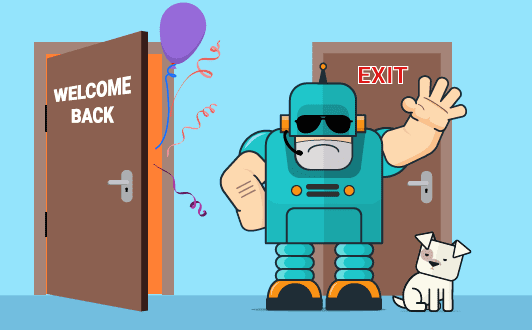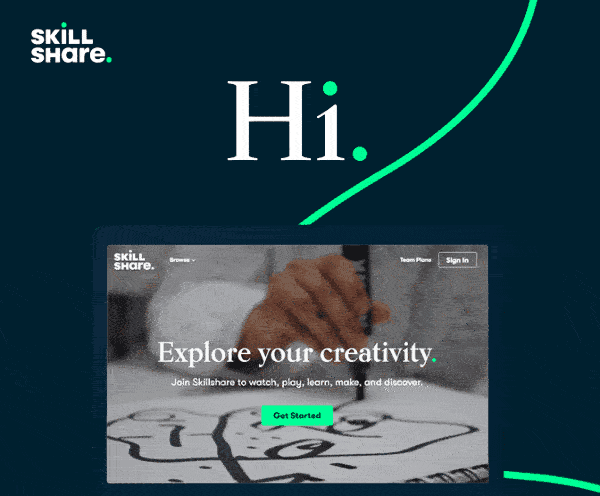Anyone working with a SaaS product knows that reducing churn is just as important as acquiring new customers. With that said, not all customers that are expected to “drop off” are worth keeping.
People switch or stop using products for a myriad of reasons. While there are certain steps that you can take to address some of these reasons, you cannot possibly address all of them. For instance, one reason to stop using your product can be that your customer switched to a different profession. You cannot fix that by adding more features to your product.
In many such cases, your sales reps may be able to convince an existing customer that doesn’t really need your product to renew their membership. However, doing this will only add to your list of unhappy customers, and unhappy customers talk.
A study conducted by the White House Office Of Consumer Affairs revealed that a happy customer will tell only 4-5 people about their experience. On the other hand, an unhappy customer will tell anywhere between 9 and 20 people about their bad experience with a business.
This is not to say that you shouldn’t try to keep any customers around. Instead, focus on understanding whether your product is still a fit for your customer. Can they still benefit from the features you are offering? Does your product make their life easier?
If the answer is yes, and yet the customer is not engaging with your product, it is worth the time and effort to try the following things to keep them around:
Help Them Complete Onboarding Steps
Like most successful SaaS product companies, I am sure you have put a lot of effort into improving your onboarding process. However, for whatever reason, a lot of users choose to skip reading your onboarding emails and videos that you share with them.
As a result, they tend to take their own route in figuring out how to achieve success with your product. Without the right guidance, this process can be frustrating, especially if your product performs a complex task or solves a complex problem.
This frustration, over time, grows to a point where the user starts getting discouraged from using your product.
So, how do you find out which of your users skipped learning the ropes of your product? One of the simplest ways to figure this out is to check the email opens and click-throughs for your onboarding emails.
The other way to determine which users may have skipped onboarding is to look at their behavior while using your product.
Once you have identified these users, you can send them follow-up emails that either contain tips or enable them to book a slot with a customer support rep that can help them make the most of your product.
Similarly, you can also deliver personalized tips within the interface of your product. These tips can be personalized based on the features they are trying to use.
Another great way to ensure your customers are able to achieve success with your product is to enable them by sharing educational content and tutorials.
Send Targeted Re-Engagement Emails That Add Value
If you have ever worked with or even spoken to a rep from a digital marketing agency, you probably already know that when done right, it can deliver incredible results. These are many types of emails a business can send out and in this article, we will be talking about all the emails you can send to re-engage customers. In this section, we’re talking about “we miss you” emails.
Re-engagement emails, or as they are commonly known, “we miss you” emails, are a well-known tool that SaaS companies use to re-engage inactive users.
I am sure that when these emails were first sent, it may have seemed like a revolutionary idea and may even have engaged a lot of customers. However, just like old technology, “we miss you” emails have now become bland.
This, however, does not mean that re-engagement emails don’t work. They still work, but with a little tweak, they must add value. See, most of your customers get hundreds of emails every week and probably get several emails from businesses that “miss them”. In order to stand out, your re-engagement email must deliver something more than a quirky or clever line encouraging them to re-open your app or visit your website.
When it comes to delivering value, you can do it by delivering useful and interesting information to your users. LinkedIn has a great example of such a re-engagement email:
Update Them About New Features
New features work great when it comes to re-engaging users. The best part is, when it comes to inactive users, you can re-introduce your existing features as “new” features since they don’t know about them (because they aren’t using your product).
With that said, it is best to treat this email (or push notification, or SMS) like a quick sales pitch based on that one feature. This means, your communication should clearly explain what the feature is, what advantages it provides, and what benefits can the user drive from the feature.
If explaining all this means you will need more than written text, create a quick walkthrough of the feature in the form of a GIF and send it to your users. This way, they will not have to click through to a video to find out more about the feature and can see it in action right within the email’s body.
This rebrand “we miss you” email by SkillShare is the perfect example of how new features should be introduced to inactive customers:
Pro Tip: If you have an email list and a few free “try on” features of your product, you can utilize a similar strategy to engage potential customers. For instance, if you have an SEO tool and have made certain features available for free (like this free SEO audit), tell your email list about them.
Offer A Special, Personalized Promotional Offer
Let’s get one thing straight, from a business point of view, discounts are a bad idea for SaaS companies. Studies support this claim. This study found that offering discounts and coupons can potentially reduce your lifetime customer value (LTV) by a whopping 30%! The scary thing is, this enormous drop in LTV is just one of the many bad things that happen when you start offering too many discounts.
This doesn’t mean you should never offer discounts. On the contrary, it means that you should carefully use discounts to make your customers feel special. How do you do that? Well, one very important role is played by the copy of your email. However, there are other ways to make them feel special besides specifying that they are getting a “customer exclusive” discount.
Here’s an amazing example by Avocode:
This email is great for three reasons:
- It communicates that the company cares about one of the most common issues that their customers face- slow speed.
- It offers a solution in the form of a better plan and also introduces more features.
- It offers an exclusive 20% discount on an upgrade.
The last point is worth checking out again. Avocode is not offering a discount on renewing an existing membership, it is offering a discount for a service that is likely to solve the challenge an inactive customer is currently facing.
Collect Feedback And Use It
This point may seem like it isn’t relevant here, but the case is quite the contrary. You may be thinking “how would collecting feedback help me stop a customer from canceling their membership?”
The truth is, in many cases, it won’t. However, taking feedback from customers that are leaving can benefit you in two ways.
One, it will tell the customers that are about to cancel that you care about the challenges they are facing and are probably ready to address their feedback. This may stop a small percentage from canceling.
The second and more pressing benefit of taking feedback from customers that are about to cancel is that you get an honest review of your product. Such feedback may contain invaluable information that can help you improve your product in ways that reduce churn.
Pro Tip: If you have collected feedback from a customer that has canceled, and have implemented their feedback to introduce a new feature or fix an existing one, make sure you let them know. There is a good chance that they may consider coming back to your company if they still think that your product is a good fit for them.
Conclusion
Businesses have been looking for ways to re-engage inactive customers long before SaaS products came along. As a result, SaaS companies have a multitude of ideas to play around with and re-engage their lost customers. I hope the ideas I shared in this article will help you re-engage some of your customers.
However, this list is not exhaustive by any measure. There are in fact so many ways to re-engage customers that they cannot fit inside a blog post. So, if I have missed out on a customer re-engagement strategy that has worked for you, feel free to share it with me (and everyone reading this article) in the comment section below.










